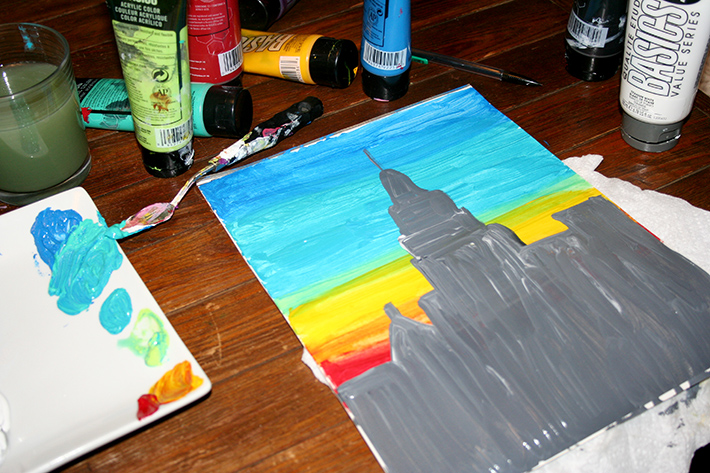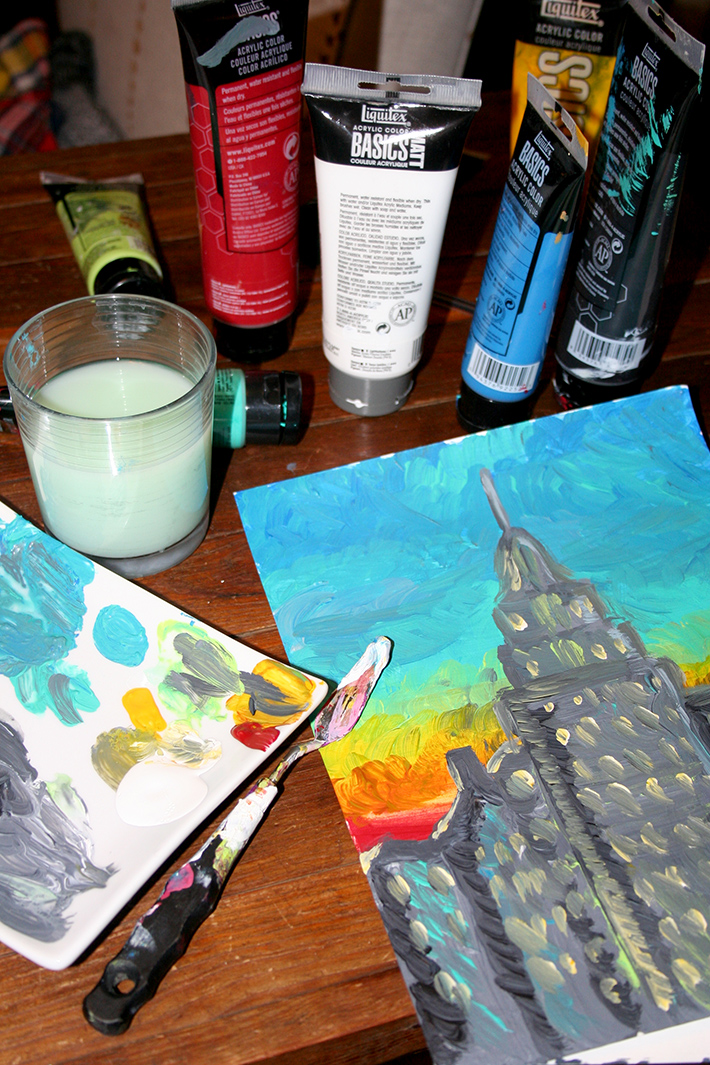If you’re interested in learning a truly painterly and very fun approach to creating art, you’ll love learning how to paint impressionist style that mimics greats like Monet and Van Gogh.
The Oxford Dictionary defines impressionism as “a style or movement in painting originating in France in the 1860s, characterized by a concern with depicting the visual impression of the moment, especially in terms of the shifting effect of light and color.” Visually, impressionist works are compelling, featuring paint applied in dabs, dots or flecks. Close up, an impressionist painting might look like complete confusion, a cacophony of color on canvas. But when you take a few steps back, it’s easy to see the forms that emerge, as in Monet’s dreamy Water Lilies or Van Gogh’s expressive Starry Night.
Impressionist painting isn’t necessarily about specific subject matter or color schemes, but about expressing the emotion and movement of a subject. While it might seem complicated to create art in this way, it’s really an incredibly fun and easy method of painting that is accessible to all levels. This tutorial will guide you through an easy method to create works in an impressionist style.

Photos and art via CakeSpy
How to paint like an impressionist
You’ll need:
- A subject (or a reference photo)
- A work surface
- Your desired type of paint
- A large palette surface
- A palette knife
- Paintbrushes
- Water for mixing
Step 1:
Set up your supplies so that everything is arranged in a way that is convenient for you and that won’t require you to get up or shift things while you are working. If necessary, prime your canvas before getting to work.Step 2:
Referring to your reference image or drawing freehand, create a very light, simple pencil sketch of your subject on your work surface. This doesn’t have to be a high-stress situation: As you can see, I sketched right from an image on my cell phone! If you don’t feel confident enough to work right on your surface, try a few practice sketches on sketch paper beforehand.
Step 3:
Create a base layer of paint in the colors you’ll be working in. This will act as a guide for you later, and it will create a rich depth of color. It probably won’t look pretty at this point; that is not important. Let the paint dry completely before proceeding. Note: If you are working in watercolor, make this layer of paint very light, since watercolor paint is translucent and this bottom layer will shine through to a certain degree. I’m using acrylic paint, and since acrylic is opaque, the intensity of the color doesn’t matter as much.
Note: If you are working in watercolor, make this layer of paint very light, since watercolor paint is translucent and this bottom layer will shine through to a certain degree. I’m using acrylic paint, and since acrylic is opaque, the intensity of the color doesn’t matter as much.
Step 4:
When you’re about to start in on the final painting, mix up some of the colors that you need. For an impressionist style, it works very well to only partially mix colors, so that when applied, they have a sort of built-in gradient and color complexity.
Step 5:
Using either a brush or a palette knife, apply the paint using not long strokes but staccato dots or flicks. This is when you’ll be thankful for the base layer of paint you set down previously. Often, impressionist paintings make more sense from a few feet away, so by having this guide, you’ll know where you should be applying paint. Note: This might seem a bit intangible, but as you paint, focus less on accuracy and more on the feeling of the scene. Much of the impressionist style is about capturing the feeling or energy of a subject, so think about your subject and let that flow through you as you paint. It might seem like strange, non-technical advice, but it will indeed contribute to your painting!
Note: This might seem a bit intangible, but as you paint, focus less on accuracy and more on the feeling of the scene. Much of the impressionist style is about capturing the feeling or energy of a subject, so think about your subject and let that flow through you as you paint. It might seem like strange, non-technical advice, but it will indeed contribute to your painting!
Step 6:
Continue applying paint. Once you have flicked or dotted your way to coating the canvas, take a step back and consider the piece. Are there highlights you can capture with a few flicks of paint here or there in a different color? For instance, with the skyscrapers featured in this example, there are lighted windows and reflections of the sunset on the sides of the buildings. Colored paint applied in a painterly way can help capture the essence of this, if not capturing it in a literal or technically precise way. Once you’re satisfied with your painting, let it dry completely in a safe place. Start pondering your next impressionist style painting!
Once you’re satisfied with your painting, let it dry completely in a safe place. Start pondering your next impressionist style painting!

Share tips, start a discussion or ask one of our experts or other students a question.
No Responses to “An Easy Approach to Impressionist Painting”